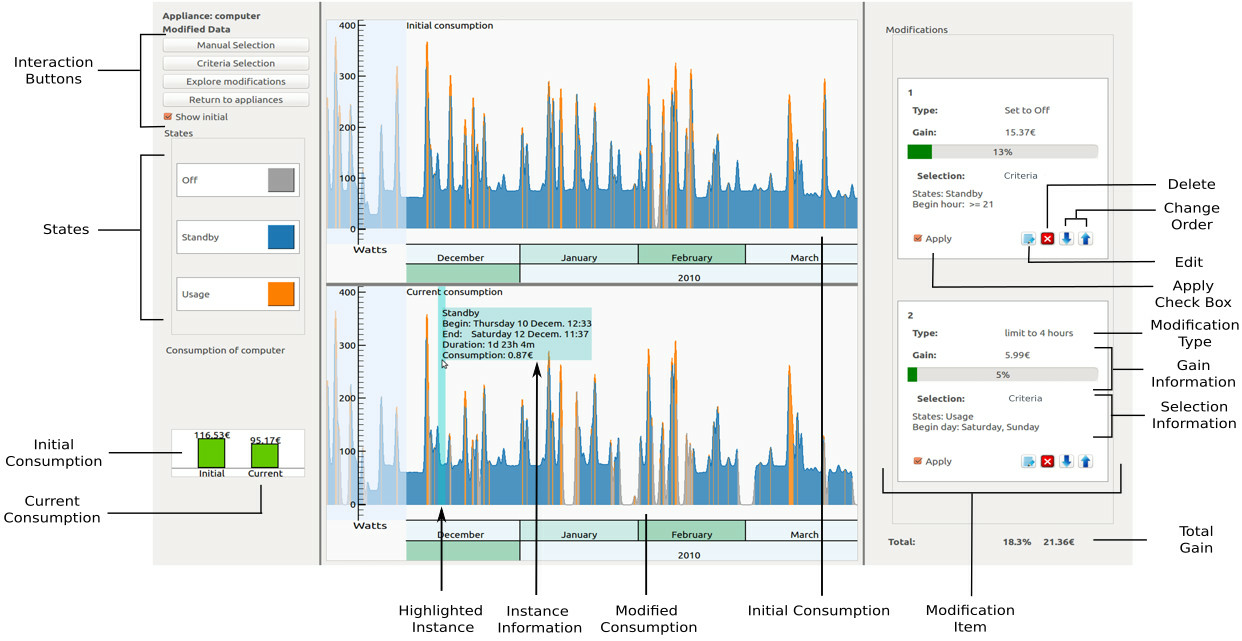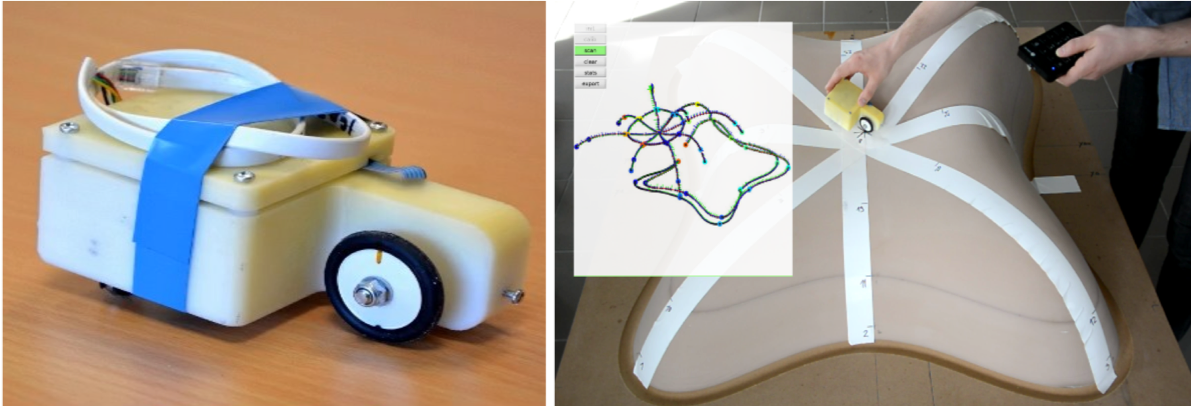Section: New Results
Visualization
A "What if" approach for eco-feedback
Participants : Jérémy Wambecke, Georges-Pierre Bonneau, Romain Vergne, Renaud Blanch.
Many households share the objective of reducing electricity consumption for either economic or ecological motivations. Eco-feedback technologies support this objective by providing users with a visualization of their consumption. However as pointed out by several studies, users encounter difficulties in finding concrete actions to reduce their consumption. To overcome this limitation, we introduce and evaluate Activelec, a system based on the visualization and interaction with user's behavior rather than raw consumption data. The user's behavior is modeled as the set of actions modifying the state of appliances over time. A key novelty of our solution is its focus on the What if approach applied to eco-feedback. Users can analyze and experiment scenarios by selecting and modifying their usage of electrical appliances over time and visualize the impact on the consumption, as illustrated in Fig. 13. In [16] we conducted two laboratory user studies that evaluate the usability of Activelec and the relevance of the What if approach for electricity consumption. Our results show that users understand the interaction paradigm and can easily find relevant modifications in their usage of appliances. Moreover participants judge these changes of behavior would require little effort to be adopted. In [15] we conducted an in-situ evaluation of Activelec, confirming these results in a real setting.
|
Morphorider: a new way for Structural Monitoring via Shape Acquisition
Participants : Tibor Stanko, Laurent Jouanet, Nathalie Saguin-Sprynski, Georges-Pierre Bonneau, Stefanie Hahmann.
In collaboration with CEA-Leti we introduce a new kind of monitoring device, illustrated in Fig. 14, allowing the shape acquisition of a structure via a single mobile node of inertial sensors and an odometer. Previous approaches used devices placed along a network with fixed connectivity between the sensor nodes (lines, grid). When placed onto a shape, this sensor network provides local surface orientations along a curve network on the shape, but its absolute position in the world space is unknown. The new mobile device provides a novel way of structures monitoring: the shape can be scanned regularly, and following the shape or some specific parameters along time may afford the detection of early signs of failure. Here, we present a complete framework for 3D shape reconstruction. To compute the shape, our main insight is to formulate the reconstruction as a set of optimization problems. Using discrete representations, these optimization problems are resolved efficiently and at interactive time rates. We present two main contributions. First, we introduce a novel method for creating well-connected networks with cell-complex topology using only orientation and distance measurements and a set of user-defined constraints. Second, we address the problem of surfacing a closed 3D curve network with given surface normals. The normal input increases shape fidelity and allows to achieve globally smooth and visually pleasing shapes. The proposed framework was tested on experimental data sets acquired using our device. A quantitative evaluation was performed by computing the error of reconstruction for our own designed surfaces, thus with known ground truth. Even for complex shapes, the mean error remains around 1%. This work was published at the 9th European Workshop on Structural Health Monitoring [14].




